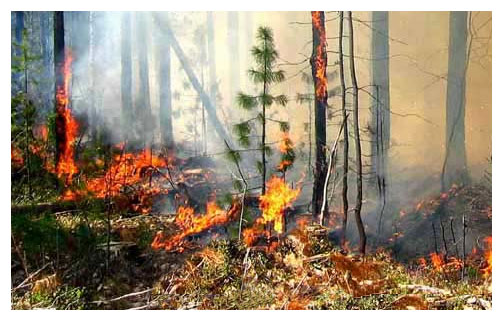In our continuing series of articles about endangered species, we once again return to the theme of interdependence, ecosystems, and the harmful effects of species loss due to various forms of human encroachment. Encroachment means going beyond the boundaries of what may be considered another species' habitat or domain. The domain in question can be that of humans as well as of animals (wild bears wandering into places established by humans for human enjoyment as well as environmental conservation is an example of this sort of dilemma) and it can also encompass cultural practices involving certain species—practices that may have persisted for hundreds or even thousands of years but which are no longer viable because the balance that maintained the dynamic between native human culture and species survival has been thrown off course.
In a previous article, we discussed the role of bison, a keystone species (i.e., one that provides the "glue" that holds together an entire ecological system: remove the bison from its ecosystem, and the entire ecosystem collapses). Certain birds are also keystone species. Some birds, such as woodpeckers, create housing for other animals in the trees they hollow out. One breed of woodpecker that used to be found throughout the Southeastern U.S.—the Ivory-Billed Woodpecker—is so endangered that until a single bird was spotted in Arkansas in 2004, it was thought to be extinct. Certain plants and fruits can only germinate after passing through the digestive tract of a specific species of bird; remove that bird from the environment, and the plant, and any life that is dependent on it, vanishes as well.
In this article, we will consider the social and ecological dynamic of several species of endangered birds. Like bats, birds are ecologically important for seed dispersal, and for their roles as predator and as prey. As climate change causes environments to become warmer, the breeding cycle of many migrating birds is being affected and is no longer synchronized with the availability of the food sources, primarily insects, on which these birds rely for their survival. As climates change and the timing of the birds is thrown off course, so is the process of seed dispersal. Also, because the pest control provided by insectivorous (insect-eating) birds requires the birds' presence at specific points in the season, crops may be left vulnerable to insect infestation.
In northern climes, breeding and nesting areas are on the decrease as tree growth patterns begin to go northward and start to take over the tundra, destroying areas that provide food and shelter for the birds that breed there. The rising sea level in coastal wetlands is threatening the wildlife and birds that exist there too. In the last 400 years, the planet has lost over 100 species of birds due primarily to human action, which has resulted in loss of habitat, overhunting, and the introduction of predators such as domestic pets allowed to roam free. At present, 1,200, or 12%, of all bird species are either endangered, threatened, or vulnerable. For some species, it is already too late.
Some bird species are limited by their inability to adapt to a new ecosystem because they are dependent on a food source or nesting source specific to their current environment. Bird species that will do better in dealing with the challenges presented by human encroachment are called generalists. Generalists adapt to whatever food source or nesting source is at hand, whether that environment is dry or wet, cool or warm—and they often actually thrive in proximity to human habitation, as they can use whatever resources are bountiful. Sparrows and pigeons are highly successful generalists; they are not picky eaters, and verge on being omnivores, eating meat if their main feeding source happens to consist of refuse and trash from human habitation. These birds thrive, even if they are not in wholly natural or pleasant conditions. But there are other species that, through no direct maltreatment by humans, are facing extinction because of something as simple as fire control.
Who wants forest fires? Who wants areas of scrub to catch fire? Are fires good for the environment? Of course not. They're certainly dangerous for both people and wildlife. But they are part of the natural dynamic. The Florida Scrub-Jay is facing extinction because it depends on areas of oak scrub, a rarity in the habitat whose growth must periodically be renewed by fires that are started by lightning. Human-initiated fire control efforts have inadvertently resulted in a species loss of roughly 20%. The Kirkland's Warbler is another instance of a bird whose habitat has been severely limited by attempts to combat or control potential fires in the pine forests of Michigan, Wisconsin, and Ontario. The warblers are now in competition with cowbirds for nesting space and resources.
The long and the short of it is this: any intersection where the natural dynamic meets the dynamic of human effort is going to alter and possibly endanger the living patterns of native species. We must sometimes make difficult or painful choices in terms of which species' safety and well-being we prioritize, even when we are not thinking primarily of human need.
For more information on birds go to:
Birds of Central Park: "A Book of Photographs":
www.biggreentv.com
American Bird Conservancy, "Bird Conservation Issues in the Americas":
www.abcbirds.org
Audobon, "Birds and Climate Change: On the Move":
www.birdsandclimate.audubon.org
Cornell Lab of Ornithology, "The Search for the Ivory-Billed Woodpecker":
www.birds.cornell.edu
Wildlife Extra, "Florida's Threatened Endemic Scrub-Jays in Decline":
www.wildlifeextra.com





![]()